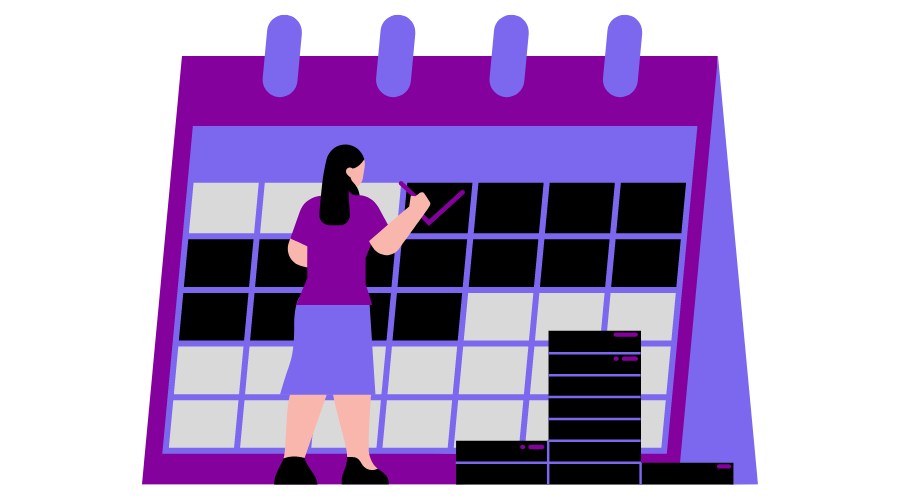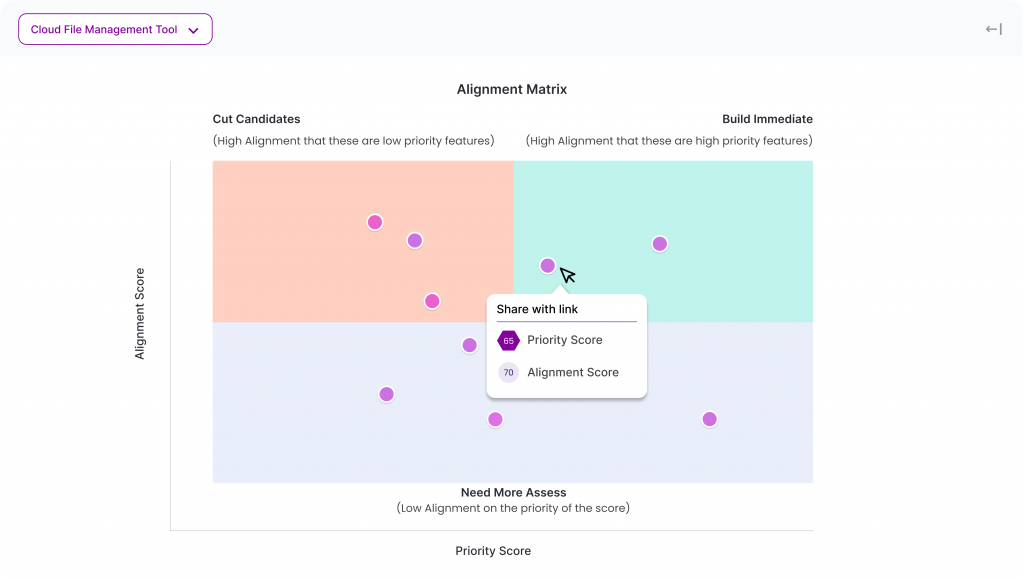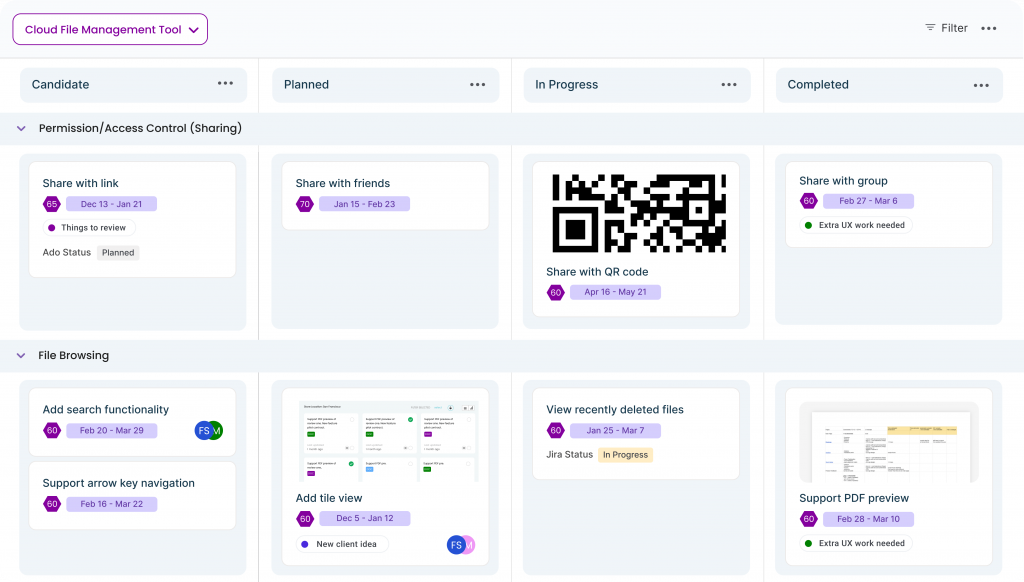Product Development Methods: Agile, Scrum, Kanban, Waterfall

What Is a Product Development Method?
A product development method is defined as a process framework for planning and executing digital products. Such a product may be operating on a website or application across devices.
The goal of any product development methodology is to provide the structure needed to take a concept and deliver a finished product. Where they differ is speed and level of flexibility in deviating from the original product roadmap.
No matter which method of product development we talk about, we cannot omit the importance of product management software that caters to product managers. Having a tool that helps in managing roadmaps, collecting customer feedback and so much more is not just important but non-negotiable.
Before we dive into each of the product development methods, let us understand why they are inseparable today from any software development process:
1. They structuralize ideas and tests feasibility
Without a method that leads to delivery, more often or not, great product ideas fail to manifest into utility. A product development method enables any product ideation process by bringing it down to steps and stages, which alone provides a preliminary estimation of costs and product feasibility.
Moreover, an invariant of the method used, feasibility tests are common among all, very early on.
2. They tell us when and what to document
Once app development company work on a product begins, managers and owners may not know which documentation is necessary based on their approach and which will simply be resource wastage.
A product development method is a manual to understanding which documentation is relevant based on selected methodology (and why).
For example, waterfall focuses enormously on documenting each stage before moving to the next, whereas agile/ spiral methods focus more on the documentation of the iterative product’s final stages in each cycle, known as sprints.
3. They are key to team alignment
One of the biggest challenges to unplanned product development is aligning a team around the complex steps and stages that any working software will have to go through.

A development method enables systematic team collaboration through alignment on key approaches to coding, hosting, testing, and launching.
4. They provide precise and time-bound targets
A product development method helps in breaking down a giganteum goal into smaller, measured targets. For instance, agile development method focuses on breaking down the final version into less sophisticated lighter versions that build on the previous version.
For each iteration, there is a single complete version that is delivered to the customers – within a predetermined period of time. This target is then further broken down into features, and features are broken down into code blocks. Therefore, every coder knows which part of the larger product they are working on, their own role in it, and what their individual targets are.
5. They help measure ROI
Product expense begins the moment you spend time on conceptualization, then keeps on rising as you put your team together, purchase technology stacks and start paying salaries. It is key to have a concrete methodology that tracks time and resource investment and seeks to optimize it to maximize revenue generation at launch and with each update.
Product development methods are not just key to structuring your delivery mechanism but also to have the structural base to monitor time and resource allocation.
4 Key Types of Product Development Methods
Product development methods range from concrete, nearly set-in-stone approaches such as waterfall, to highly flexible and user-feedback centric methods of agile.
Below are the 4 key product development methods most widely used today:
1. Agile methodology
Agile product development focuses on continuous and iterative development of a product where each sprint/ build-cycle represents a complete iteration, and is repeated again.
Rather than being linear in progress, where one stage is completed and not looked back on till the product is fully complete, the agile method focuses on the following:
- Delivering in updated ‘versions’
- Monitoring performance and taking user/customer feedback
- Going back to the drawing board to plan delivery of improvement updates
- Finalizing next sprint updates and aligning team on upcoming sprints
- Delivering improved version
- Repeat
2. Kanban process
Kanban is a process that uses the agile framework for development, while focusing on continuously decreasing the amount of work in progress.
Kanban is more of an agile method that applies deliberation to reduce work-in-progress. The key reason to do so is to test the limit of strain that the pipeline can take while working smoothly and not getting clogged with bottlenecks.

The Kanban WIP limits enable teams to break down larger development goals into smaller cycles and monitor the pipeline for any issues that may come up, before increasing the weight of work in each cycle.
The weight of each cycle depends on the amount of work the team is able to complete on time, while following hygiene practices are necessary to maintain code-base health.
3. Scrum process
Scrum is an agile-based process where it focuses on team interactions and meetings to plan and execute each sprint. A scrum is a set of meetings, organized and documented by the scrum master who typically reports to the product manager.
The process of scrum includes collectively identifying and prioritizing new updates, identifying and managing backlogs, and sharing feedback on learnings, successes, and gaps.
Both Kanban and Scrum focus on two different and complementary aspects of further detailing out individual processes within the agile framework.
While Kanban focuses on ‘how to do the work efficiently’, Scrum focuses on ‘how to plan the work effectively’.
4. Waterfall methodology
Waterfall methodology is a stage-based developmental framework, where the entire product’s development is completed in linear stages.
Unlike the agile-framework which delivers iterations of the product and is a continuous process based on user feedback. Waterfall takes a linear approach to delivering the finished product.
Updates to the product are, therefore, less flexible, and can only be incorporated once the product development stages are completed.
Waterfall also focuses on intense documentation for each stage of work, unlike agile, which focuses on sprint-based documentation and generally maintains a clean-code health that can be easily coded on top for regular updates.
With the rise of customer-centric product development that depends on changing customer preferences and opinions to fuel product updates, waterfall has less practitioners than it did 15 years ago.
Differences and Similarities Between Agile and Waterfall Methods
While there are some similarities between agile-based methods and waterfall development method, Kanban and Scrum divergences have made their differences more prominent today.
Let us look at the similarities that are still common among these methods and the key differences that set these two methods apart:
1. Development time and revenue generation
Similarity: The final version of a product, where it needs very less updates (say, quarterly) and is relatively established, requires about the same amount of total development hours in both agile and waterfall methods- although launch time for agile is much shorter (weeks or months, unlike years for waterfall).
Difference: While total development time may approximate the same, product launch time and start of revenue generation is much faster for agile.
Even if the earliest versions where the product is functional and may even be completely free to use, it provides extensive user feedback in beta stages and even after the product is out of beta. This exponentially increases the product’s utility over time and remains sensitive to any changes in user behavior and group preferences.
On the other hand, waterfall being a rigid system of development, leaves very less room for conducting and incorporating feature-based feedback while under development (can’t test a feature that doesn’t function).
This always carries the risk of losing out on changing trends and new feature innovations by competitors, and the product does not make any money or gain a user base during the entire development process under waterfall.
2. Role of user surveys and customer feedback
Similarity: Feasibility studies that require consumer feedback is an inherent part of both agile and waterfall methods. No development project moves forward without passing consumer feedback tests that guarantee a certain level of adoption-based utility of the planned product. Both methods rely largely on conjoint analysis for market feasibility tests today.
Difference: Feasibility surveys and studies can provide a framework to identify user needs and expectations. It cannot deep-dive into precise features and comparative usage among them.
Agile methods recognize this limitation of early knowledge, and focuses diligently on collecting user-test feedback pre-launch, and on customer feedback post-launch. This enables agile product teams to be high sensitive to changing user preferences and potentially beat established market players.
Waterfall does focus on user interface testing and product-use feedback before starting the development work, but does not conduct end-user research for each feature being developed. Since development time is considerably larger for waterfall method, there is always a risk that the final product delivered may be lacking essential features based on new user behaviors.
3. Developmental iterations and stages
Similarity: While agile is designed to work in several iterations, each iteration still follows the same stages as waterfall, namely, conceptualization, planning, developing, testing and release.
Difference: The main difference in development between agile and waterfall is that the former is far more feedback-centric in planning its iterations – where each iteration is contained by the set WIP limits. Waterfall, on the other hand, plans its entire developmental deck at once. User testing is focused largely on UI/UX, rather than feature utility.
4. Human resource and investment requirements
Difference: Agile methods can work on lead teams to deliver the launch-ready product, and can flexibly scale based on requirements and successes with each iteration. This allows for an agile team to start small and grow with the success of the product.
Waterfall hires the teams based on total strength needed to deliver the complete product, and therefore requires a larger capital expenditure at the start, when ROI and revenue prospects are only estimates.
